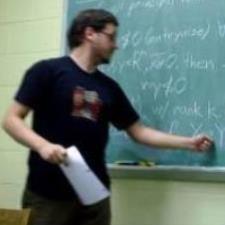
William W. answered • 11/26/19
Top ACT Math Prep Tutor
There are a number of ways to determine the sample space including a tree diagram but the bottom line is this:
Case Prob Prob Prob Prob Total
RRWW 7/18 6/17 5/16 4/15 840/73440
RRWB 7/18 6/17 5/16 6/15 1260/73440
RRBW 7/18 6/17 6/16 5/15 1260/73440
RRBB 7/18 6/17 6/16 5/15 260/73440
RWRW 7/18 5/17 6/16 4/15 840/73440
RWRB 7/18 5/17 6/16 6/15 1260/73440
RWWR 7/18 5/17 4/16 6/15 840/73440
RWBR 7/18 5/17 6/16 6/15 1260/73440
RBRW 7/18 6/17 6/16 5/15 1260/73440
RBRB 7/18 6/17 6/16 6/15 1512/73440
RBWR 7/18 6/17 5/16 6/15 1260/73440
RBBR 7/18 6/17 5/16 6/15 1260/73440
WRRW 5/18 7/17 6/16 4/15 840/73440
WRRB 5/18 7/17 6/16 6/15 1260/73440
WRWR 5/18 7/17 4/16 6/15 840/73440
WRBR 5/18 7/17 6/16 6/15 1260/73440
WWRR 5/18 4/17 7/16 6/15 840/73440
WBRR 5/18 6/17 7/16 6/15 1260/73440
BRRW 6/18 7/17 6/16 5/15 1260/73440
BRRB 6/18 7/17 6/16 5/15 1260/73440
BRWR 6/18 7/17 5/16 6/15 1260/73440
BRBR 6/18 7/17 5/16 6/15 1260/73440
BWRR 6/18 5/17 7/16 6/15 1260/73440
BBRR 6/18 5/17 7/16 6/15 1260/73440
Total 27972/73440
Each line is a different combination of choices that yields exactly 2 reds. Determining the probability of each and then summing them up results in 27972/73440 which can be reduced to 259/680




